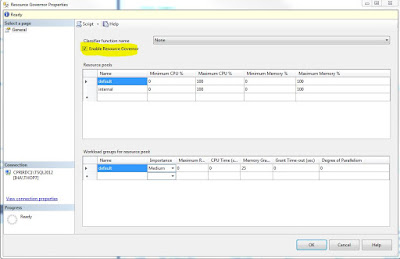My experience working as an operational DBA is that a significant
portion of time is spent on time consuming repetitive requests from the end users or
necessary maintenance work like monitoring space usage and remedying issues
with limited space.
If the DBAs are
lucky and are sent on training from time to time, they may have the opportunity
to learn about interesting topics like performance tuning or troubleshooting
performance issues. My experience with
this is that you can go off and learn all sorts of tips and tricks about
performance optimization and get back to work with intentions of utilizing your
new or refreshed skills and proactively tuning your environment. However, you get back to work and the steady
stream of day to day requests such as security provisioning returns and your best
intentions once again have to take a back seat.
The topic of using Windows/AD groups for the purposes of SQL
Server security is not only a security best practice that is recommended by Microsoft
but also a very concrete action you can take to free up time to perform
additional proactive operations that improve the SQL Server environment that
you are responsible for.
In this blog, Ill summarize just a couple benefits of using
Windows/AD groups to make securing your SQL Server much more efficient and less
labor intensive.
Anyone who has attained any level of SQL Server
certification knows that learning the basics of SQL Server is required
learning. Two of the first things you
learn about is the need for creating users and logins in SQL Server and time is
spent learning the difference.
In order
to even connect to a SQL Server instance you need to have a login to
authenticate your credentials. That
login is mapped to a user object and from there privileges and permissions are
provisioned as necessary. Sounds simple
right? It is but it can get a lot more complicated due to the amount of
work it would take to administer all of these objects if we created logins and
user objects for each individual user and for each application context.
The basis of this blog is that Windows authentication should
be used to leverage the security of a trusted domain in a Windows network
environment. Benefits also include being able
to use the features such as password complexity and expiration requirements
that are administered by the domain administrators.
When defining a login it is good idea to use an Windows/AD group
such as the following:
USE [master]
GO
CREATE LOGIN [DOMAIN\ADGroup] FROM
WINDOWS
WITH
DEFAULT_DATABASE=[Adventureworks2012];
Then you can create a user object for this login:
USE [Adventureworks2012]
GO
CREATE USER [DOMAIN\ADGroup] FOR LOGIN [DOMAIN\ADGroup]
WITH DEFAULT_SCHEMA=[dbo];
EXEC sp_addrolemember N'db_datareader', N'DOMAIN\ADGroup';
GO
CREATE USER [DOMAIN\ADGroup] FOR LOGIN [DOMAIN\ADGroup]
WITH DEFAULT_SCHEMA=[dbo];
EXEC sp_addrolemember N'db_datareader', N'DOMAIN\ADGroup';
A very real benefit from a security view is that now
connection strings from applications to the SQL Server instance do not need to
include vulnerable passwords. If the
domain is a trusted domain then a connection string such as the following will
be much more secure.
"Driver={SQLServer};Server=SERVERNAME;Database=Adventureworks2012;Trusted_Connection=yes;"
The biggest time saving
benefit is now when a new employee is hired or when an employee leaves, the
domain administrator will just have to include or exclude them from the Windows/AD
group and because the login is created with the Windows/AD group the user will
automatically be included or excluded from the SQL Server security model. No more adding or deleting individual logins
and users and also the risk of creating orphaned users is reduced as well.
A lesser known benefit of using Windows/AD groups for logins is that
the ability to audit on a granular level is not lost. For example, a user is authenticated by
signing on to their trusted domain. The Windows/AD group is mapped to a login. When a
SQL Server user who is mapped to that login performs DDL or DML their actions
are logged as their Windows account. If
you were to execute SP_WHO2 you would see their own personal Windows
account ie: Domain\UserName.
This illustration shows the various level of security from a
Windows level to a Database level.
Example: Permissions Hierarchy (MSDN)
By
creating a Windows/AD group and a server level role and a database level user
the security model becomes very robust.
Thanks for reading,
SQLCANUCK
























